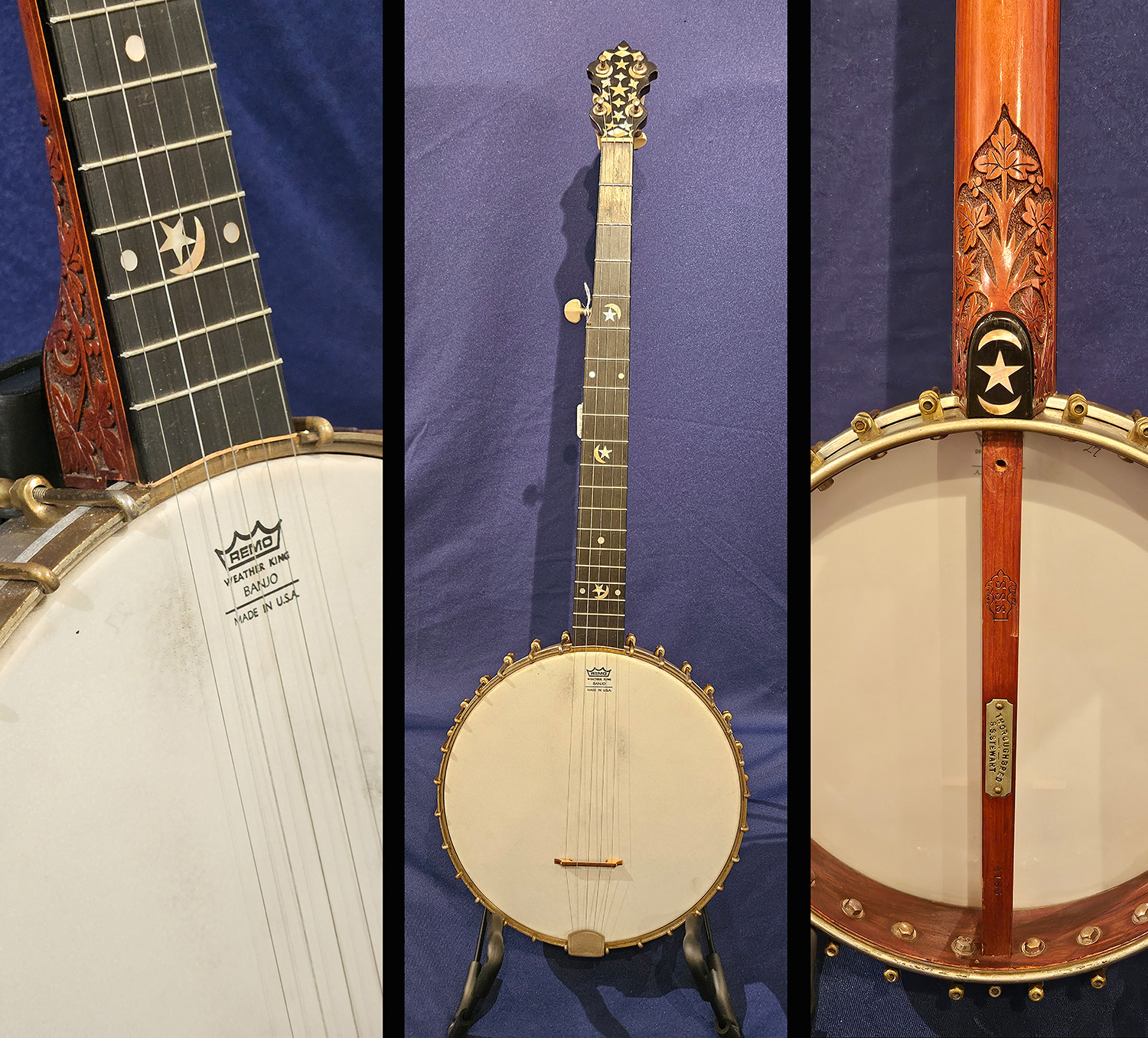

In 2017, the Sousa Archives acquired the Old Town School of Folk Music Banjo Exhibition Records and Samuel Swaim Stewart Banjos. This collection documents the unique legacy of the nineteenth-century American banjo, featuring Samuel S. Stewart (1855-1898), a builder of fine-art banjos and Horace Weston (1825-1890), one of America’s most accomplished black banjo artists between the 1870s and 90s.
Joel Walker Sweeney (1810-1860), the country’s first “pop minstrel show artist,” introduced the five-string banjo to America’s stage, but was not its first inventor. The instrument that became the standardized five-string banjo was frequently played by enslaved West African musicians.
According to Old Town School of Folk Music’s Paul Tyler, the five-string banjo sprang from early plucked string instruments that were made from gourds and called bandora, banza, banjah, and akonting. The three-stringed akonting, an instrument made with a long neck and a body made from a calabash gourd, is still used today by the Jola people of West Africa’s The Gambia.
Most banjo playing styles associated with these earlier traditions can be traced with some reasonable accuracy, the dating and location of the earliest five-string addition to the banjo family remains inconclusive. According to Jay Bailey’s 1972 article, “Historical Origin and Stylistic Developments of the Five String Banjo,” the origin of these instruments is lost in a maze of folklore.
While the definitive origin of the five-string banjo is unclear, the instrument gained significant popularity immediately after the Civil War. Instrument makers began mass producing and marketing artist-grade banjos to America’s middle class and specialized banjo orchestras became common. However, by the early years of the twentieth century, four- and five-string banjos had become associated with white, rural mountain music, and the banjo’s minstrel and classical music traditions both fell into obscurity.
At the vanguard of builders of artist-grade banjos was Philadelphia’s Samuel S. Stewart. Considered by musicians of his time to be the nineteenth-century Stradivari of banjo makers, Stewart created extraordinarily beautiful instruments that, for their day, were unsurpassed for their workmanship, tone, and playability. This was because he demanded exceptional materials and innovative construction techniques.
While Stewart’s innovative silver rimmed shell design and banjeaurine grew out of America’s late nineteenth-century “banjo boom,” his work was quickly surpassed by more technologically sophisticated builders like A. C. Fairbanks and William Lange, whose instruments eventually surpassed the Stewart banjo’s tonal quality and volume. Stewart’s scornful dismissal of Fairbank’s and Lange’s new innovations eventually led other builders and banjo performers to dismiss his antiquated instruments by the early 1900s. However, his belief that the banjo was a high-art instrument remained the distinctive hallmark of his salesmanship and instruments.
Horace Weston, considered the Paganini of the nineteenth-century banjo, was one of two prominent high-art banjoists to promote Stewart’s banjos during the 1880s and 1890s. Weston, along with Canadian American banjoist Alfred A. Farland (1864-1954), were recognized around the world for their performances of European classical music on the banjo. Their stories and influence on America’s banjo traditions will continue with part 2 of the Sousa Archives’ “America’s Early Banjo Legacy” on January 25, 2025. For more information about the Sousa Archives’ Stewart banjos contact Scott Schwartz at either schwrtzs@illinois.edu or 217-333-4577.